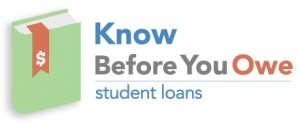 The federal government this week released the awaited generic financial aid shopping sheet. The document is a standard of format for schools to display students’ anticipated aid, tuition and debt from day one to after graduation.
The federal government this week released the awaited generic financial aid shopping sheet. The document is a standard of format for schools to display students’ anticipated aid, tuition and debt from day one to after graduation.
SUNY is the largest university system in the nation to adopt this form, which will be used beginning in 2013. Other New York colleges such as Syracuse University and Vassar College have pledged their usage–totaling almost 70 institutions in New York State to allow students to easily, uniformly and accurately gauge expected costs of their education.
Chancellor Nancy Zimpher, who played a large role in the push for higher education’s use of such a sheet, says that students should “know before they owe.”
When the form was made public, Zimpher commended Washington for its work. “President Obama and his administration have got it right, and we look forward to continuing to work with them in championing financial aid transparency for students across the country.”
In a June op-ed in the Huffington Post, Chancellor Zimpher noted risks associated with using it and why the piece is “A Risk Worth Taking.” But with rising tuition costs across the board, Chancellor Zimpher believes that the form will help draw lines.
She adds, “A college education is not cheap. It is expensive to get a meaningful degree, and students deserve to know what that entails before they enroll. Outlining these costs — making them easy to find and to understand — is the right thing to do.”
New York Senator Kirsten Gillibrand pledged her support when the U.S. Department of Education and the Consumer Financial Protection Bureau released the model form.
“A college degree should be a ticket to the American Dream, not a ticket to financial ruin,” Gillibrand says, “But for millions of students and their families, that dream is getting lost in the fine print of forms that hide the true cost of college and saddle families with unexpected debt.”
Every student applying to SUNY in 2013 should expect to receive a financial aid shopping sheet to outline their financial outlook in some of SUNY’s 64 colleges and universities. To view the document, click here.

